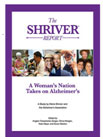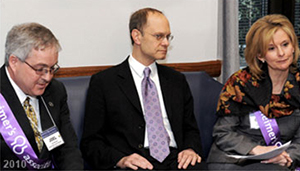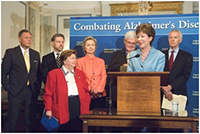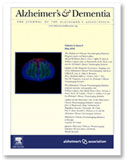 Landmark legislation passes The National Alzheimer's Project Act (NAPA) is the largest legislative victory in many years for the Alzheimer cause. Over the last several years, the Alzheimer's Association has been the leading voice in urging Congress and the White House to pass the National Alzheimer's Project Act (NAPA). The National Alzheimer's Project Act will create a coordinated national plan to overcome the Alzheimer crisis and will ensure the coordination and evaluation of all national efforts in Alzheimer research, clinical care, institutional, and home- and community-based programs and their outcomes. Alzheimer's advocates were instrumental in moving NAPA through Congress. More than 50,000 e-mails, nearly 10,000 phone calls and more than 1,000 meetings by the Alzheimer's Association and its advocates led us to the historic legislative victory for the Alzheimer community. |
| January 4, 2011 |  President Obama signs NAPA into law, marking the largest legislative victory in many years for the Alzheimer cause. President Obama signs NAPA into law, marking the largest legislative victory in many years for the Alzheimer cause. |
| Late December | Alzheimer's Association advocates have sent more than 15,000 email messages to the White House asking the President to sign the National Alzheimer's Project Act into law. |
| December 15, 2010 | Thousands of advocates flood Capitol Hill with phone calls and e-mails urging their Representatives to vote for NAPA. NAPA is passed by the House of Representatives and moves to the White House for signature. |
| December 9, 2010 | Alzheimer's Association President and CEO Harry Johns testified before the House Committee on Energy and Commerce, Subcommittee on Health. Harry spoke about the importance of NAPA and encouraged its immediate passage. |
| December 8, 2010 | After Alzheimer's Association advocates blanket Senate offices with phone calls and e-mails for several days, asking the Senate to pass NAPA immediately, the National Alzheimer's Project Act (S.3036) passed the Senate unanimously and moved to the House of Representatives. |
| December 1, 2010 | After months of behind the scenes work by the Alzheimer's Association federal affairs team with champions in Congress, the Senate Committee on Health, Education, Labor, and Pensions (HELP) approved the National Alzheimer's Project Act (S. 3036). |
| October 18, 2010 |  With the release of The Shriver Report: A Woman's Nation Takes on Alzheimer's Disease, repeated appeals are made for the passage of NAPA in Hill visits, Administration briefings, Washington policy briefings, and by Maria Shriver in interviews on This Week and other news programs. With the release of The Shriver Report: A Woman's Nation Takes on Alzheimer's Disease, repeated appeals are made for the passage of NAPA in Hill visits, Administration briefings, Washington policy briefings, and by Maria Shriver in interviews on This Week and other news programs. |
| September 21, 2010 | Concluding the Alzheimer's Breakthrough Ride, on World Alzheimer's Day participants cycled to Capitol Hill and presented more than 110,000 petition signatures for delivery to Congress. The petition called for passage of the National Alzheimer's Project Act and two other Alzheimer's Association priorities. Researchers who participated in the Alzheimer's Breakthrough Ride visited Capitol Hill to meet with more than 50 Members of Congress, urging their support for NAPA. Later that day, the Alzheimer's Association delivered a message in support of NAPA at a special White House briefing on Alzheimer's disease. Harry Johns, Alzheimer's Association President and CEO, and National Board Member Stephen Hume, Psy.D., an individual living with the disease, made presentations at the meeting, focusing on the urgent need for a coordinated national Alzheimer's strategy and for its swift implementation. See the full video of the White House meeting. |
| July 30, 2010 | The Alzheimer's Association President and CEO Harry Johns, former National Board Public Policy Chair Bettylu Saltzman, and Public Policy Vice President Robert Egge meet again with Pete Rouse, one of President Obama's top aides, to solicit the Administration's support for NAPA and for creating a national strategy to combat Alzheimer's disease. |
| Summer 2010 | The Alzheimer's Association's President and CEO, Harry Johns, and the federal affairs team make the rounds on Capitol Hill, meeting with members of Congress and staff to drum up support for NAPA and to plan strategy on how to enact the bill by the end of the year. |
| March 9, 2010 | Alzheimer's Association Advocacy Forum attendees march on Capitol Hill to meet with their Members of Congress, urging their support for the National Alzheimer's Project Act. David Hyde Pierce joins advocates from Iowa to meet with Sen. Chuck Grassley (R-Iowa). |
February 2, 2010 | With active collaboration and drafting support from the Alzheimer's Association, the National Alzheimer's Project Act is reintroduced by Senator Evan Bayh and Senator Susan Collins in the Senate (S.3036) and by Rep. Ed Markey and Rep. Chris Smith (H.R.4689) in the House. The Alzheimer's Association immediately endorses the reintroduced bill. |
July 31, 2009 | Based on the Alzheimer's Study Group recommendations and following consultations with the Alzheimer's Association, Sen. Mel Martinez introduces the first National Alzheimer's Project Act in Congress. The Alzheimer's Association immediately endorses the bill. |
July 20, 2009 | The Alzheimer's Association President and CEO Harry Johns, former National Board Public Policy Chair Bettylu Saltzman, and Public Policy Vice President Robert Egge meet with Pete Rouse, one of President Obama's top aides, to discuss the Alzheimer's crisis and introduce the need for a bold, coordinated national Alzheimer strategy to address it. |
March 25, 2009 | Alzheimer's Study Group releases its final report, A National Alzheimer's Strategic Plan: The Report of the Alzheimer's Study Group. The report calls for the creation of a National Alzheimer's Strategy and an Alzheimer's Project Office within the federal government. Harry Johns, President and CEO of the Alzheimer's Association, pledged, "You can be assured that the Alzheimer's Association will play a leading role in seeking the enactment of the core recommendations present in the ASG report." That same day, advocates attending the 2009 Alzheimer's Association Advocacy Forum visited their Members of Congress urging support for these key Alzheimer's Study Group recommendations, the beginning of the Association's ongoing campaign to accomplish this objective in the 111th Congress. Register now to attend the 2011 Alzheimer's Association Advocacy Forum. |
July 11, 2007 | With endorsement of, and financial and in-kind support from, the Alzheimer's Association, the Alzheimer's Study Group is launched at a Capitol Hill Conference. The Alzheimer's Study Group is also endorsed at the launch event by then Alzheimer's Disease Task Force co-chairs, then-Senator Hillary Clinton and Senator Susan Collins, and Rep. Ed Markey and Rep. Chris Smith, as well as by Senator Barbara Mikulski and Senator Richard Burr. |
July 2007 | Speaker Newt Gingrich and Robert Egge author an article in Alzheimer's and Dementia: The Journal of the Alzheimer's Association. This article, "Developing a National Alzheimer's Strategy Equal to the Epidemic," first makes the case for the creation of a federal Alzheimer strategy. |
"National Alzheimer’s Project Act (NAPA)
Landmark legislation passes
The National Alzheimer's Project Act (NAPA) is the largest legislative victory in many years for the Alzheimer cause. Over the last several years, the Alzheimer's Association has been the leading voice in urging Congress and the White House to pass the National Alzheimer's Project Act (NAPA). The National Alzheimer's Project Act will create a coordinated national plan to overcome the Alzheimer crisis and will ensure the coordination and evaluation of all national efforts in Alzheimer research, clinical care, institutional, and home- and community-based programs and their outcomes. Alzheimer's advocates were instrumental in moving NAPA through Congress. More than 50,000 e-mails, nearly 10,000 phone calls and more than 1,000 meetings by the Alzheimer's Association and its advocates led us to the historic legislative victory for the Alzheimer community."








